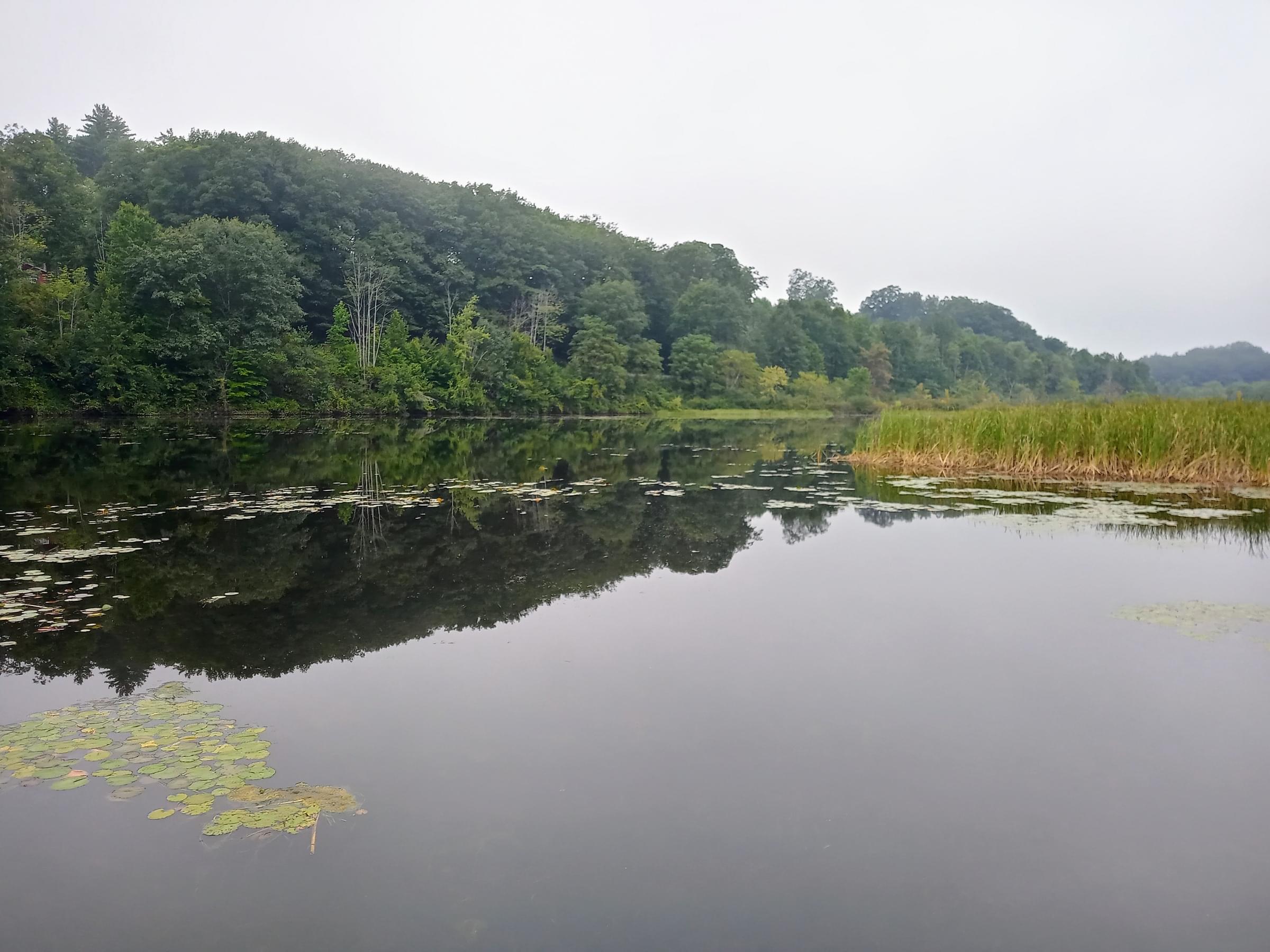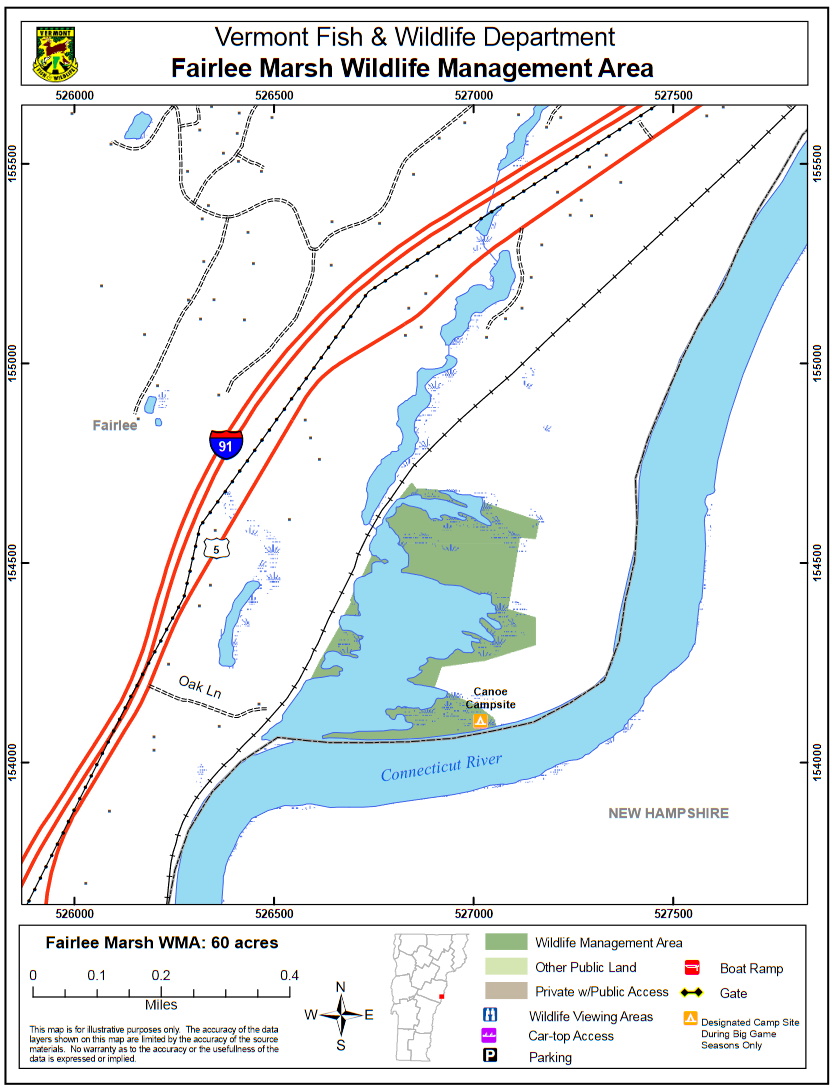Fairlee Marsh WMA

Tips for Birding
The best access is by boat. Paddlers can put in at the Orford Boat Launch about a mile upstream (New Hampshire side), or at Reed's Marsh--closer but not navigable at low water or when the emergent vegetation has had time to grow.
Birds of Interest
Expect to find woodcock, black ducks, mallards, wood ducks, blue-winged teal, Canada geese, great blue herons, and ospreys. Occasional sightings of bald eagles have occurred. Wood duck nesting boxes, maintained by the Department, are frequently utilized by wood ducks and hooded mergansers. Songbirds associated with freshwater marshes, lakes, ponds, and rivers can be found here, such as swallows, kingfishers, and cedar waxwings.
About this Location
Fairlee Marsh Wildlife Management Area (WMA) is located in the east-central Vermont town of Fairlee. The WMA is 60 acres in size (33 acres of wetland and 27 acres of upland) located where the outlet of Lake Morey empties into the Connecticut River. It is bounded by the Connecticut River on the south, the Boston and Maine Railroad on the west, and agricultural fields on the north and east sides. It is owned by the State of Vermont and is managed by the Vermont Fish and Wildlife Department.
Access is by boat from the Connecticut River, where an undeveloped campsite is located at the river’s edge. The campsite is maintained as a stop along a designated canoe trail.
The marsh located on the WMA has a permanent water regime because it is directly connected to the Connecticut River and fed by the Lake Morey outlet brook. Water depths vary from 6-8 feet in the channel to several inches at the margins, with the majority of the wetland in the 12-24 inch depth range. This creates a diversity of plant and animal habitats. Principal emergent aquatic vegetation includes cattail, bulrush, sedge, iris, and pickerelweed. Shoreline areas consist of alder, sedges, and nettle. Tree species include aspen and birch; elm and oak occupy the higher ground adjacent to the north and south extremities.
The area is particularly attractive to waterfowl because of its situation along the Connecticut River migration corridor and its proximity to agricultural land. Alder cover and moist loam soils along the wetland border offer excellent habitat for woodcock. Excellent habitat exists for furbearers and the wetland provides a good fishery in both open water and ice fishing seasons.
Features
Restrooms on site
Wheelchair accessible trail
Entrance fee
Content from Fairlee Marsh Wildlife Management Area guide and map
Last updated March 2, 2024
